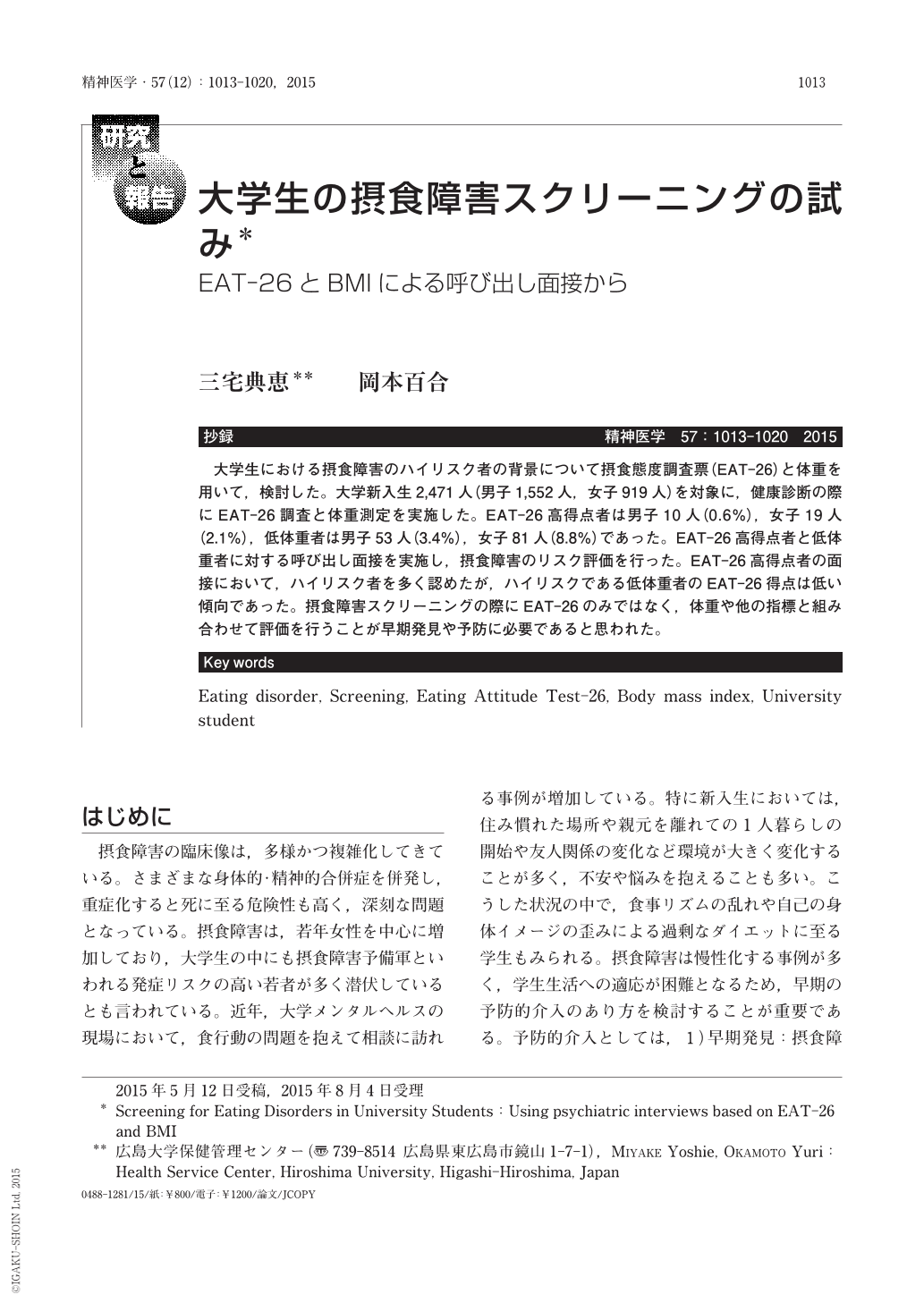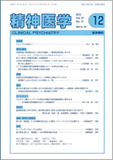Japanese
English
- 有料閲覧
- Abstract 文献概要
- 1ページ目 Look Inside
- 参考文献 Reference
抄録
大学生における摂食障害のハイリスク者の背景について摂食態度調査票(EAT-26)と体重を用いて,検討した。大学新入生2,471人(男子1,552人,女子919人)を対象に,健康診断の際にEAT-26調査と体重測定を実施した。EAT-26高得点者は男子10人(0.6%),女子19人(2.1%),低体重者は男子53人(3.4%),女子81人(8.8%)であった。EAT-26高得点者と低体重者に対する呼び出し面接を実施し,摂食障害のリスク評価を行った。EAT-26高得点者の面接において,ハイリスク者を多く認めたが,ハイリスクである低体重者のEAT-26得点は低い傾向であった。摂食障害スクリーニングの際にEAT-26のみではなく,体重や他の指標と組み合わせて評価を行うことが早期発見や予防に必要であると思われた。
This study investigated the prevalence of risk factors for eating disorders in university students. Data from 2,471 (1,552 male, 919 female) students' EAT-26 (Eating Attitudes Test-26) and BMI (Body Mass Index) were collected in 2012. There were 10 males (0.6%) and 19 females (2.1%) with high scores on the EAT-26, and 53 males (3.4%) and 81 females (8.8%) with low BMI. Students with high scores on the EAT-26 and low BMI were psychiatrically interviewed to assess their risk of having an eating disorder. Students with high scores on the EAT-26 tended to have a high risk of having an eating disorder. However, students with low BMI and high risk of having an eating disorder tended to show low scores on the EAT-26. Screening using both the EAT-26 and BMI would be needed for early detection and prevention of eating disorders.

Copyright © 2015, Igaku-Shoin Ltd. All rights reserved.


